Fragments
Scanning protocols, coordinate systems, and data formats mirror those used for the full scrolls. Every fragment dataset contains:
- 3D X‑ray volumes at several resolutions / beam energies.
- Multispectral photographs (RGB + IR).
- Hand‑labeled ink masks for at least one surface volume, suitable for supervised ML.
We group the fragments by the facility where they were scanned:
- DLS Fragments (2023) – Six fragments scanned at Diamond Light Source (UK).
- ESRF Fragments (2025) – Three fragments scanned on beamline BM18 at the European Synchrotron Radiation Facility (Grenoble, FR).
Work‑in‑progress 👷♀️ File formats, folder names, and alignment conventions may still shift. Expect additional volumes, surface volumes and meshes and ink labels to appear over time!
1 · DLS (Diamond Light Source) Fragments
The first six fragments to be released. They were scanned at Diamond Light Source. For more technical details, see EduceLab-Scrolls: Verifiable Recovery of Text from Herculaneum Papyri using X-ray CT and EduceLab Herculaneum Scroll Data (2023) Info Sheet.
⚠️3D x-ray scan volumes of Fragments 5-6 are aligned, but Fragments 1-4 are NOT aligned.
PHerc. Paris 2 Fr 47 (Fragment 1)

Volume 20230205142449: 3.24µm, 54keV, 7219 x 20MB .tif files. Total size: 145 GB
Volume 20230213100222: 3.24µm, 88keV, 7229 x 24MB .tif files. Total size: 171 GB
PHerc. Paris 2 Fr 143 (Fragment 2)

Volume 20230216174557: 3.24µm, 54keV, 14111 x 46MB .tif files. Total size: 645 GB
Volume 20230226143835: 3.24µm, 88keV, 14144 x 43MB .tif files. Total size: 599 GB
PHerc. Paris 1 Fr 34 (Fragment 3)
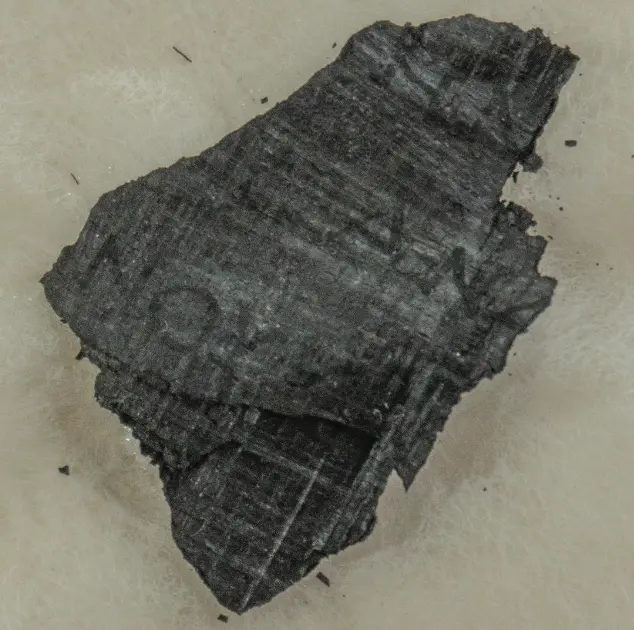
Volume 20230212182547: 3.24µm, 88keV, 6650 x 20MB .tif files. Total size: 134 GB
Volume 20230215142309: 3.24µm, 54keV, 6656 x 18MB .tif files. Total size: 121 GB
PHerc. Paris 1 Fr 39 (Fragment 4)
Originally held back for automated scoring in the Kaggle competition, this fragment has since been released.

Volume 20230215185642: 3.24µm, 54keV, 9231 x 23MB .tif files. Total size: 211 GB
Volume 20230222173037: 3.24µm, 88keV, 9209 x 24MB .tif files. Total size: 216 GB
PHerc. 1667 Cr 1 Fr 3 (Fragment 5)
From the same original scroll as Scroll 4 (PHerc. 1667), which was partially opened in 1987 using the Oslo method. Find this fragment on Chartes.it.
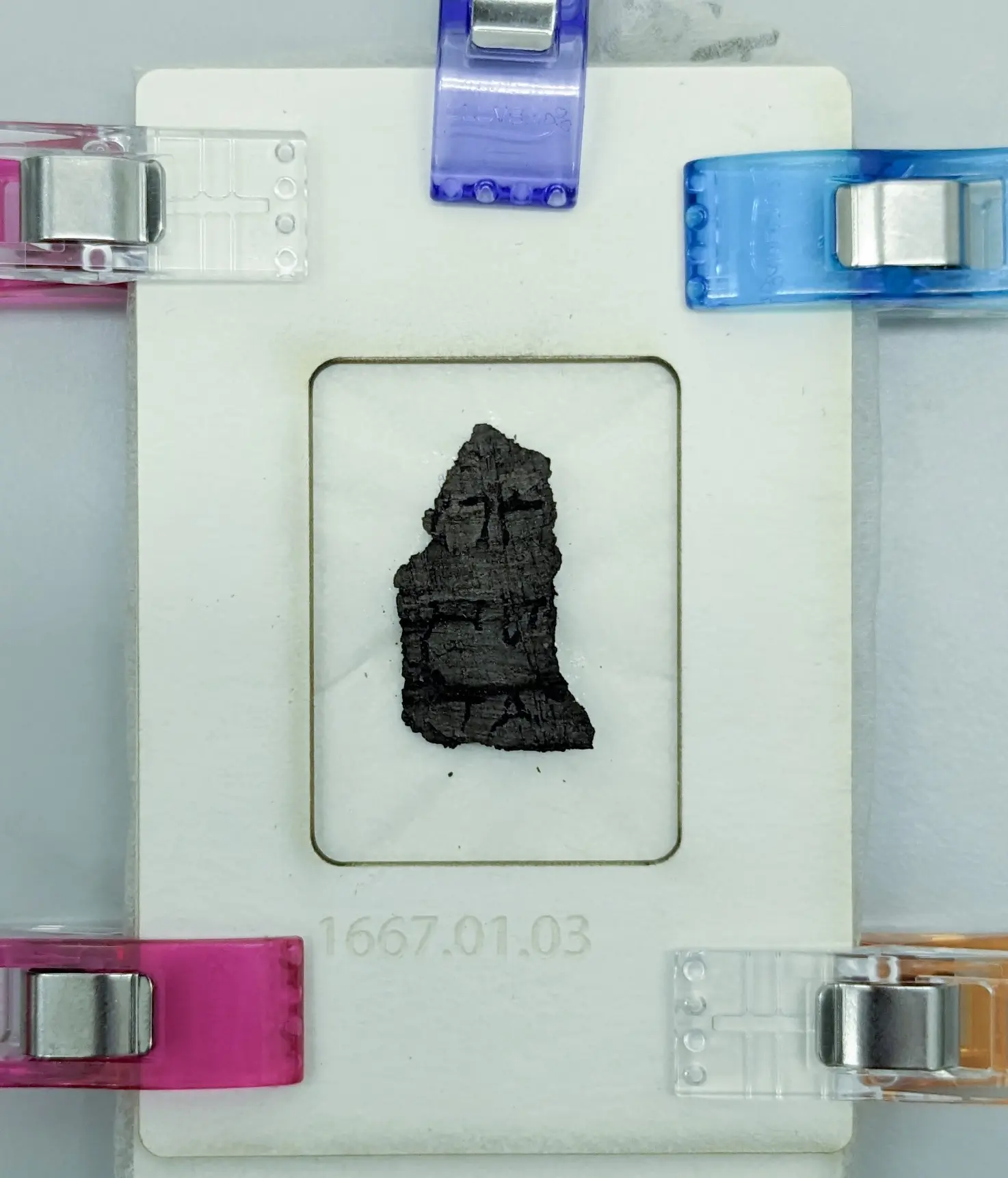
Volume 20231121133215: 3.24µm, 70keV, 7010 x 13MB .tif files. Total size: 87 GB
Volume 20231130111236: 7.91µm, 70keV, 3131 x 3MB .tif files. Total size: 8.5 GB
PHerc. 51 Cr 4 Fr 8 (Fragment 6)
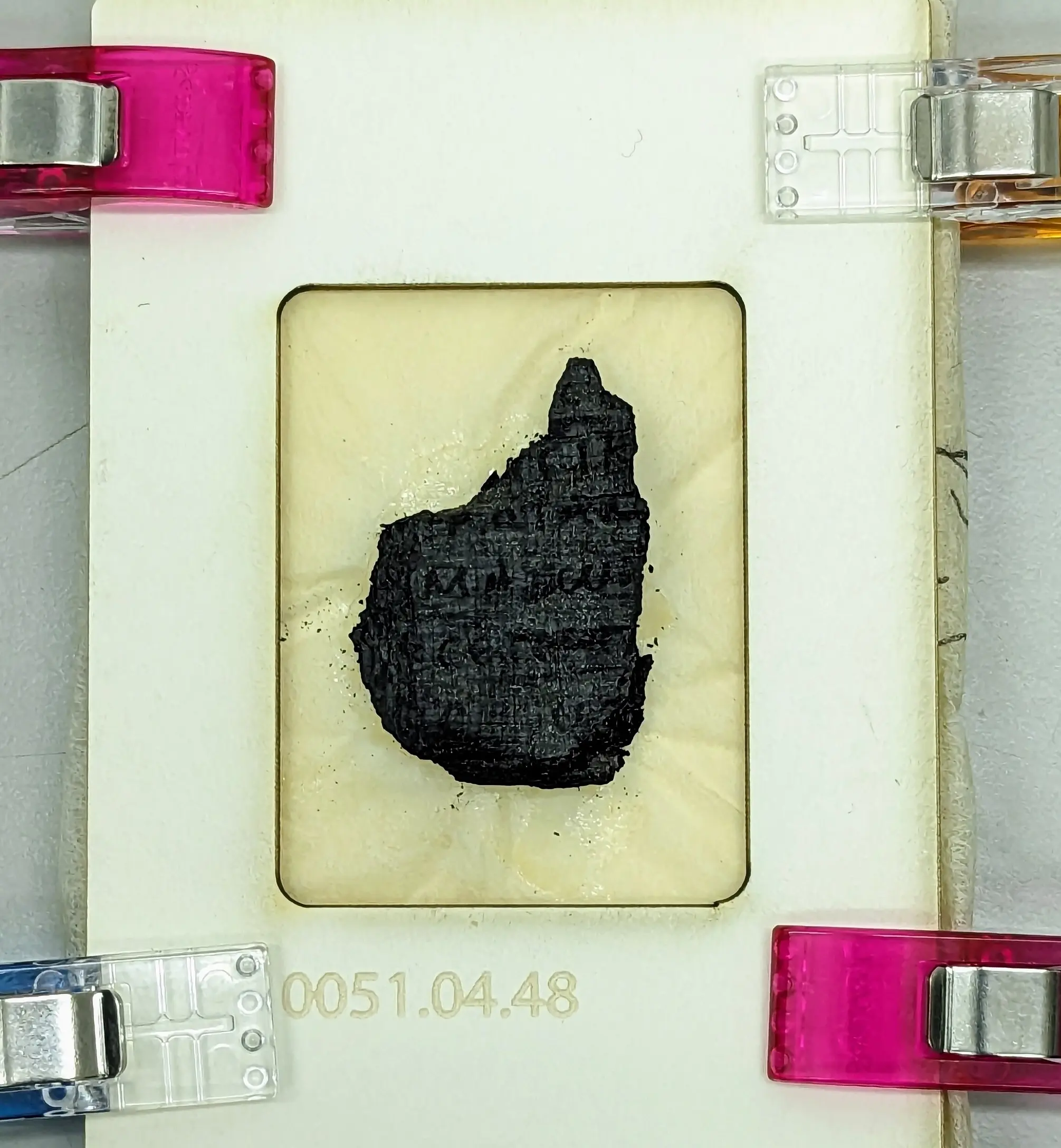
Volume 20231121152933: 3.24µm, 53keV, 8855 x 29MB .tif files. Total size: 253 GB
Volume 20231130112027: 7.91µm, 53keV, 3683 x 6MB .tif files. Total size: 21 GB
Volume 20231201112849: 3.24µm, 88keV, 8855 x 29MB .tif files. Total size: 253 GB
Volume 20231201120546: 3.24µm, 70keV, 8855 x 29MB .tif files. Total size: 253 GB
Show tiny‑fragment context photo
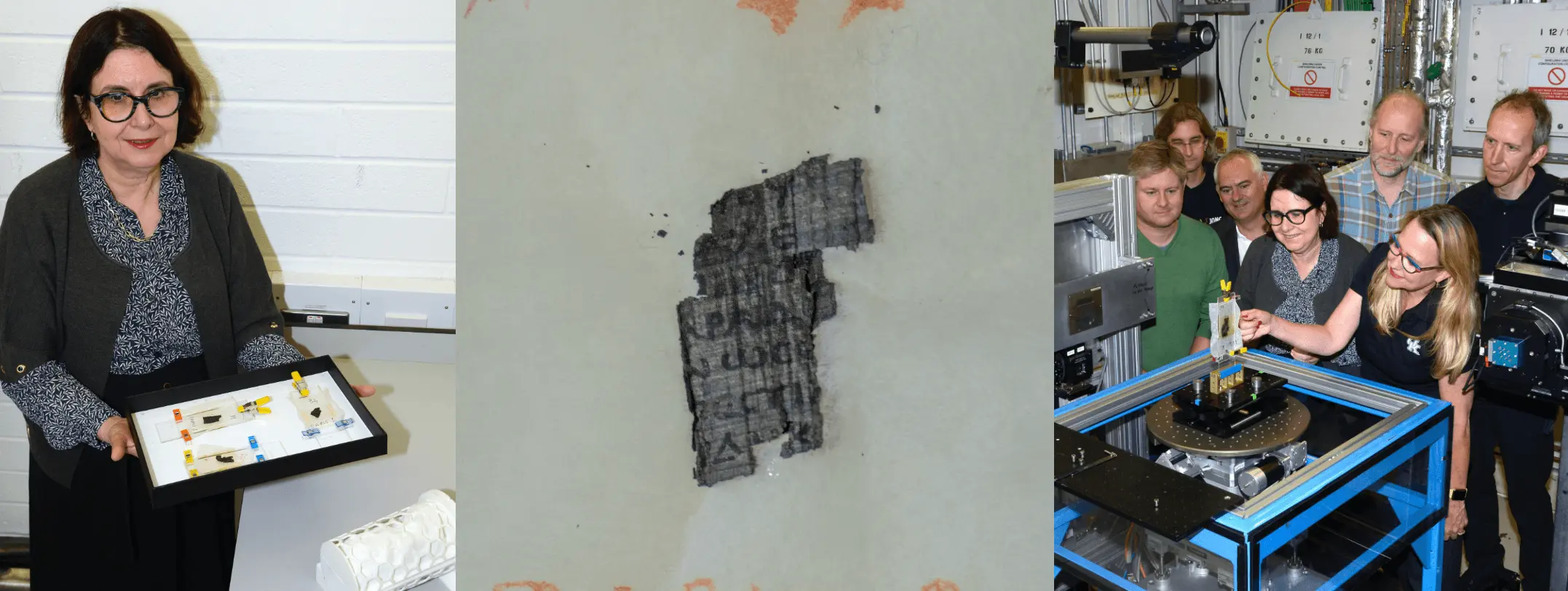
2 · ESRF Fragments (BM18, Grenoble — May 2025)
Between 6 May 2025 and 12 May 2025 we scanned three additional fragments on the BM18 beamline at the 4th‑generation European Synchrotron Radiation Facility (ESRF). Phase‑contrast helical CT, ultrafine 2.2 µm voxels, and several sample‑to‑detector distances were explored.
👉 Draft info‑sheet: ESRF Fragment Data (May 2025)
*All ESRF volumes are published as OME‑Zarr (six‑level multiscale) rather than loose TIFF stacks.
Fragment 500P2
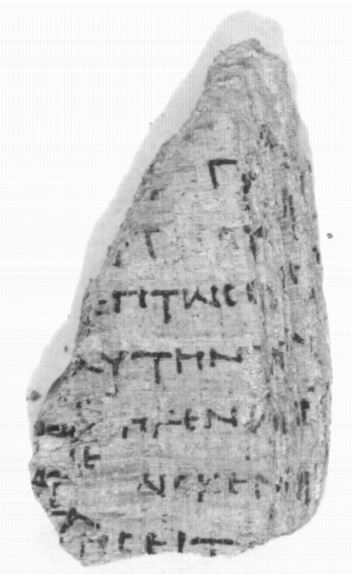
- 2.215 µm, 110 keV · OME‑Zarr
- 4.317 µm, 111 keV · OME‑Zarr
- Multispectral stack (16 bands, 420–1050 nm)
- Case + mesh STL (nylon 12 print‑ready)
Fragment 343P
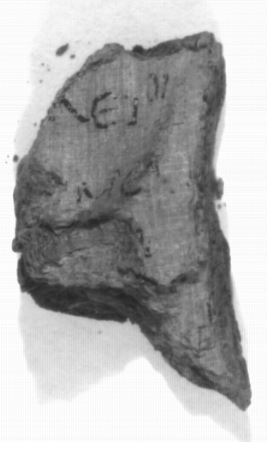
- 2.215 µm, 111 keV · OME‑Zarr
- 4.320 µm, 116 keV (bin×2) · OME‑Zarr
- Multispectral stack (16 bands)
- Case + mesh STL
Fragment 9B
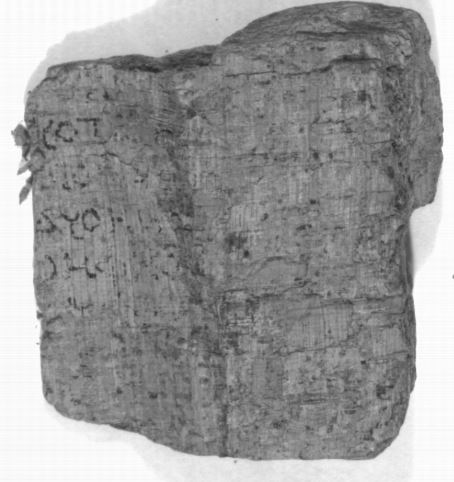
- Volume 20250521125136 , 8.64µm, 1.2m propagation distance, 116keV average incident energy. uint8 OME-Zarr archive. Total size: 72.4 GB
- Volume 20250820154339 , 2.40µm, 0.3m propagation distance, 77keV average incident energy. uint8 OME-Zarr archive. Total size: 1.7 TB
- Multispectral stack (16 bands)
- Unwrapped segments
- Case + mesh STL
Preliminary ink detection – Our TimesFormer ML models already pick up discrete strokes in the 2.2 µm volumes of 343P and 500P2. For a sneak‑peek see the blog post. Surface volumes & precise IR alignment are coming soon.
Data format at a glance
Work‑in‑progress 👷♀️ File formats, folder names, and alignment conventions may still shift. Expect additional volumes, surface volumes and meshes and ink labels to appear over time!
/fragments/ # EduceLab classic datasets (TIFF stacks)
└─ Frag1/PHerc… .volpkg/
├─ config.json # metadata
├─ volumes/ # multiple resolutions / energies
│ └─ 202302…/0000.tif …
└─ working/
└─ 54keV_exposed_surface/
├─ surface_volume/00.tif …
├─ ir.png
├─ inklabels.png
└─ alignment.psd
/fragments/ # ESRF 2025 datasets (OME‑Zarr)
└─ PHerc0500P2/
├─ 2.215um_HEL_TA_0.4m_110keV.zarr/
├─ 4.317um_HA_… .zarr/
├─ paths/ # surface volumes (WIP)
├─ multispectral/
└─ cases/ # STL meshes & 3D‑printed holders
- Fragments 1‑6 use the original TIFF‑stack
.volpkglayout.
⚠️ ESRF fragments ship as OME‑Zarr multiscale volumes for instant cloud streaming.
⚠️ All infrared & multispectral images are supplied pre‑aligned where possible. Otherwise, check the
alignment.psdlayers.
Training of ML models for ink detection
The idea is to train ML models on the fragments, since we have the ground truth data of where the ink is (in addition to the “crackle” method). Then, those ML models can be applied to the scrolls.
At a high level, training on a fragment works like this:
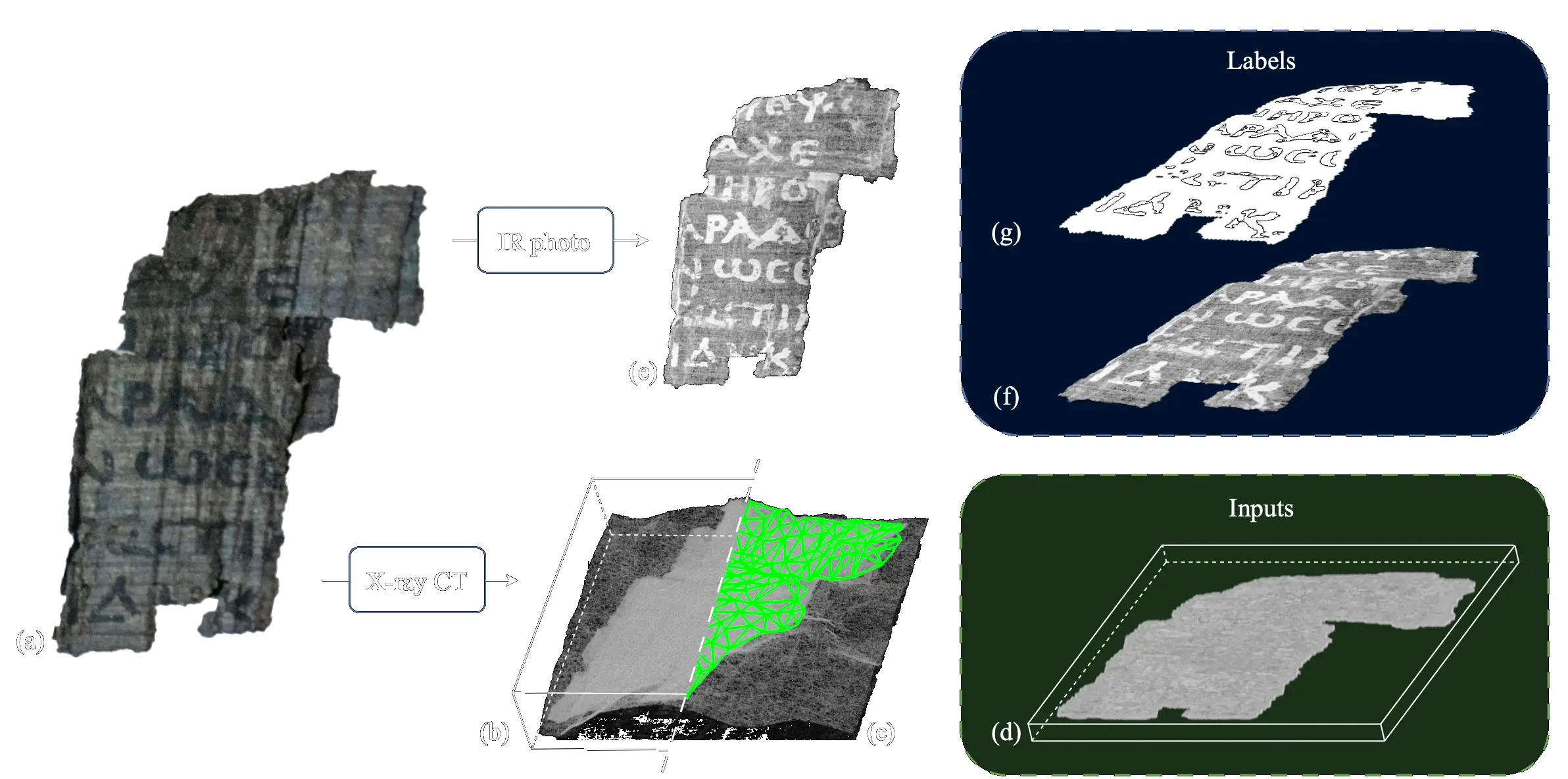
From a fragment (a) we obtain a 3D volume (b), from which we segment a mesh (c), around which we sample a surface volume (d). We also take an infrared photo (e) of the fragment, which we align (f) with the surface volume, and then manually turn into a binary label image (g). For more details, see Tutorial 5.
License
Fragment datasets are released under different licenses. We encourage you to abide by the related dataset license before working on it.